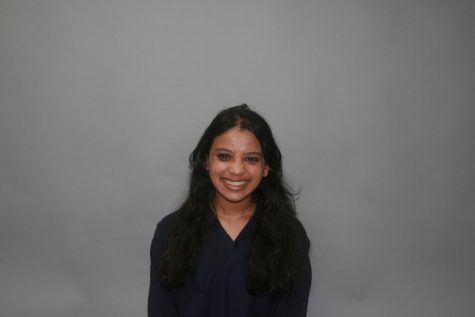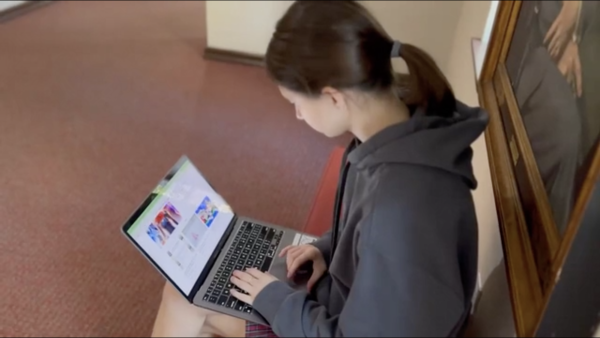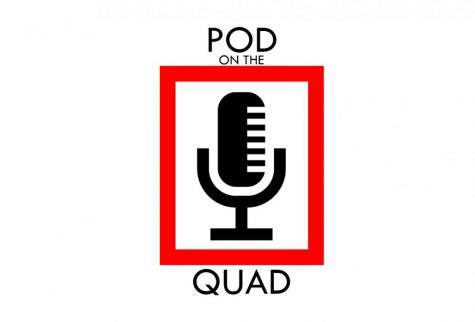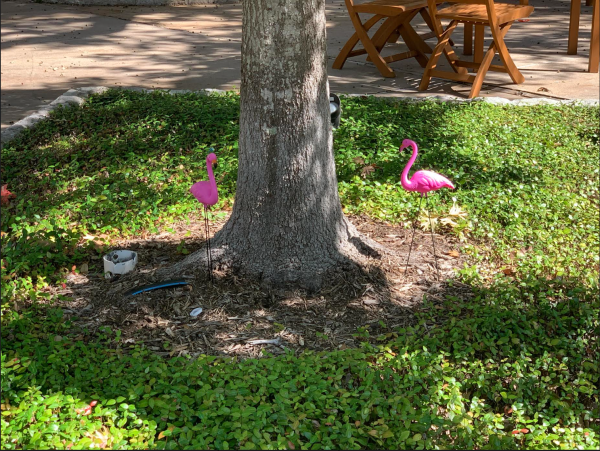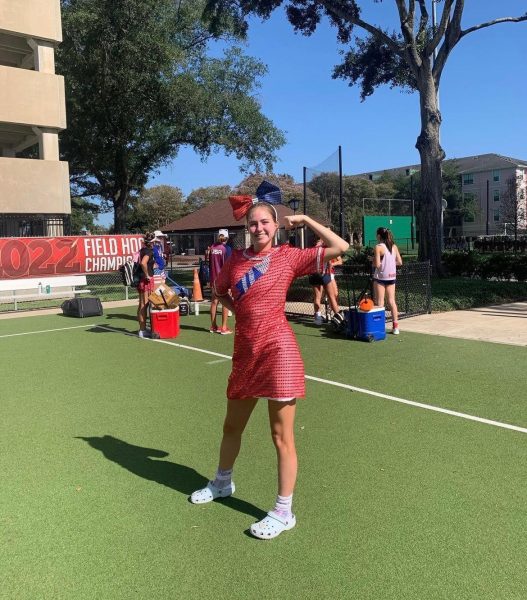Students grapple with racial, economic challenges
Studies show that BIPOC communities are particularly vulnerable to lasting socioeconomic impacts of the pandemic.
Junior Isaí Meléndez mostly drinks smoothies at lunch because they are the only thing he can consume without removing his mask. Whenever he grows irritated trying to wriggle the smoothie straw underneath the confines of his mask, he thinks of his grandmother.
Last semester, Melendez had two options—return to school and risk infecting his grandmother, who lives with him, or stay online and jeopardize his access to a formal education.
“I had to go back to school in order to maintain any possibility of me receiving future scholarships,” said Melendez, who comes from a Latinx working-class family and relies heavily on merit and academic performance-based scholarships. “It wasn’t the best choice, but it was kind of my only choice.”
The pandemic has exposed the pervasive nature of the country’s systemic inequality. COVID has ravaged minority and low-income communities, with Black and Latinx citizens being the hardest hit. Higher poverty rates, limited access to healthcare and crowded living conditions have made communities of Black, People of Color and Indigenous people especially vulnerable.
I had to go back to school in order to maintain any possibility of me receiving future scholarships.
— Isai Melendez
Carolyn DePinho, a senior leader of Girls Empowering Minds and the Women of Color affinity group, says there are several reasons for the continuing reality of systemic racism throughout healthcare and public health institutions during COVID. Historically disadvantaged populations, particularly Latinx and Black communities, are victims of not only decreased access to healthcare, but also a lower standard of care because of physicians’ implicit bias.
Research shows that BIPOC are also often hesitant to see medical professionals outside of life-or-death scenarios due to a history of institutionalized discrimination and racially exploitative practices rampant in the healthcare system. A recent government study shows that minority teens are less likely to seek or receive treatment for mental health issues as well, which have spiked in teens since the start of the pandemic.
DePinho said that institutionalized racism and disparate health outcomes consequently lead to higher rates of comorbidity in America’s BIPOC community. Comorbidity refers to the presence of two concurrent diseases and often warrants specialized care and greater resources. When ICUs are overwhelmed, those resources are diverted to patients that are easier to save than those with underlying conditions, which occur more often in BIPOC.
Another reason DePinho cited as to why BIPOC have higher infection and death rates is “inequity in the main ways to prevent COVID”—wearing masks, washing hands and keeping socially distanced. Minorities of a low socioeconomic status may not be able to afford to buy or wash masks and are more likely to live in crowded conditions.
“We already have such insane housing inequities, and especially in Latinx and Black households, it’s quite common to have multigenerational families in already smaller housing,” DePinho said. “They’re not able to self-isolate within their homes.”
These social determinants of health are inextricably linked with the way that students approach the pandemic.
Unlike families like mine, they don’t really have an incentive to stay safe.
— Isai Melendez
Melendez, who works at an arts and crafts store, has noticed that the majority of customers he has reprimanded for not wearing a mask have been white men. He acknowledges how the privilege and increased access to healthcare may craft a false sense of invincibility amongst some upper-class families.
“Unlike families like mine, they don’t really have an incentive to stay safe,” Melendez said. “If a richer family gets the virus, they are always sure they can treat it with little economic risk.”
Melendez has experienced far more anxiety and persistent frustration during the pandemic. Not only does he have to cope with the perpetual risk of infecting his grandmother, but his hypervigilant efforts often seem futile because others do not adhere to safety guidelines.
“Dealing with the circumstances that kind of forced me to go back to school, being careful with all these stringent safety measures and then seeing people be totally negligent.” Melendez said. “I’m forced to feel the anxiety on others’ behalf.”
Because of a recent increase in the number of COVID-positive juniors and seniors, students were given the option to attend online class for two weeks. Students living with high-risk family members, like Melendez and freshman Nadiya Naehr, are especially vulnerable. Naehr was temporarily part of a multigenerational household when her grandmother stayed with them after having surgery.
“Going home to my grandmother every day really emphasized the repercussions of not following social distancing guidelines and consistently wearing my mask,” Naehr said. “These were things that I was doing already, but having [my grandmother] living with us really served to remind me why I was doing them.”
In addition to health risks posed by the virus, COVID-19 has subjected some families to devastating financial burdens.
Having [my grandmother] living with us really served to remind me why I was [wearing masks].
— Nadiya Naehr
History department chair Russell Hardin emphasized that the pandemic has imposed severe economic challenges that disproportionately affect working-class Americans. Hardin cites his own experience as an actor who had to supplement his income by waiting tables over a decade ago in Chicago.
“The restaurant that I used to work at is now shut down. COVID destroyed it,” Hardin said. “If coronavirus had happened 12 or 13 years ago, before I started teaching, I would have lost my home and had to move back to Houston with my family.”
The economic hardship Hardin describes is not as hypothetical for some families at the school. Over the summer, Chief Financial Officer Greg Swan received calls from parents hit hard by the financial crisis caused by the pandemic.
Many families heavily involved in the oil and gas industry reached out for the first time to ask for financial aid, and families already receiving assistance were in need of more help. By the start of the school year, SJS was providing over 200 students with financial aid and sending a handful of families direct assistance to cover the cost of uniforms and technology.
“We’re trying to cover as much as we can of the cost of these families attending school,” Swan said. “Not just the tuition, but everything else. Our biggest job is making sure students feel comfortable attending St. John’s, no matter their socioeconomic status.”
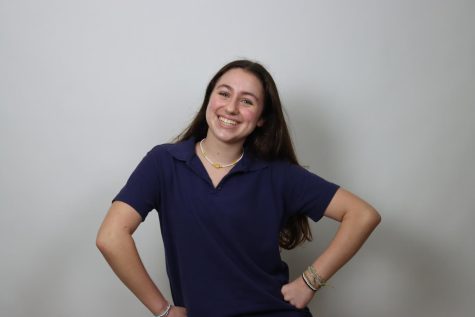
Ella Piper Claffy ('24) joined The Review in 2020 as a freshman. She frequently draws anatomically accurate whales and has a special affinity for the...
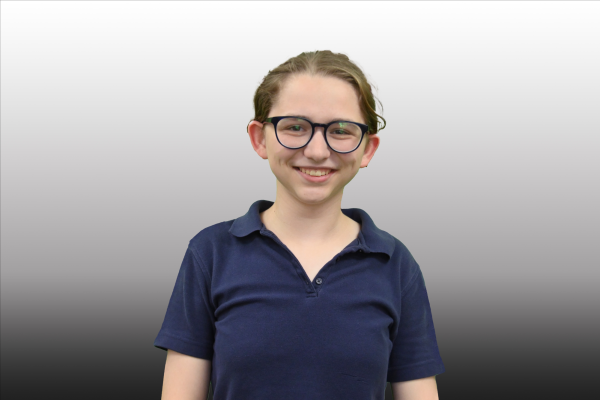
Annie Jones ('24) joined The Review in 2020 as a freshman. She has four younger siblings and considers herself the wunderkind of shenaniganery.





